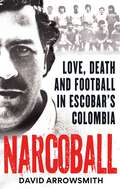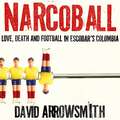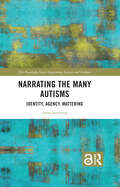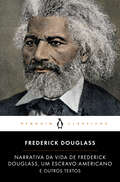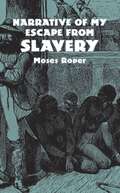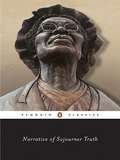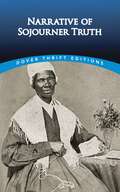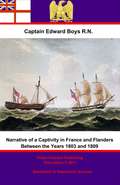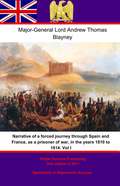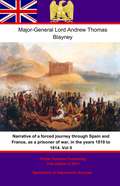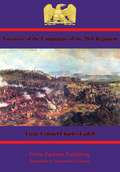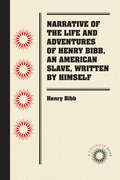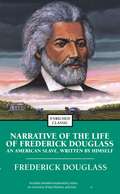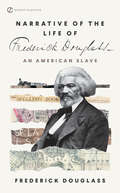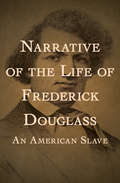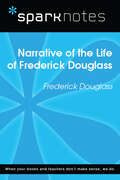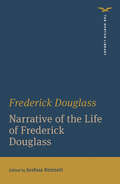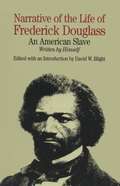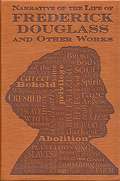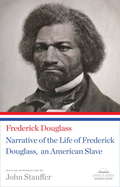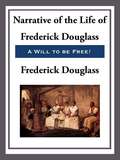- Table View
- List View
Narcissism and Politics
by Jerrold M. PostIn this age of narcissism, the proliferation of politicians with significant narcissistic personality features is dramatic. Driven by dreams of glory, they seem to find the spotlight that the arena of politics provides irresistible. This book analyzes narcissism and politics and systematically explores the psychology of narcissism - the entitlement, the grandiosity and arrogance overlying insecurity, the sensitivity to criticism, and the hunger for acclaim - illustrating different narcissistic personality features through a spectrum of international and national politicians. It addresses the power of charismatic leader–follower relationships, as well as the impact of age and illness on leaders driven by dreams of glory.
Narcoball: Love, Death and Football in Escobar's Colombia
by David ArrowsmithPablo Escobar had one obsession. Not drugs, not money, not power... football.Narcoball uncovers the incredible story of Colombian football during the early 1990s - shaped by drug lords, rivalries, and ambition. It uncovers a football empire backed by cartels - where victory was a currency of its own, and defeat, a matter of life and death.This is a different story of Pablo Escobar and his rivals. A tale of clandestine deals that reshaped Medellin's football clubs, where fortunes were won and lost. It unveils the extraordinary bonds that Escobar forged with football's luminaries and why his influence reached unprecedented heights, leading to the astonishing 5-0 victory over Argentina in Buenos Aires, the murder of referees, and the ruthless coercion of officials culminating in the killing of Andrés Escobar - the Colombian defender who paid the ultimate price for an own goal in the 1994 World Cup. It is also an examination of a people's relationship with both the sport and the nefarious leaders that brought both pride and terror to their communities.Set against the U.S War on Drugs, international threats, and government clampdowns, this is a gripping exploration of Colombian club football under Escobar's rise and fall.
Narcoball: Love, Death and Football in Escobar's Colombia
by David ArrowsmithPablo Escobar had one obsession. Not drugs, not money, not power... football.Narcoball uncovers the incredible story of Colombian football during the early 1990s - shaped by drug lords, rivalries, and ambition. It uncovers a football empire backed by cartels - where victory was a currency of its own, and defeat, a matter of life and death.This is a different story of Pablo Escobar and his rivals. A tale of clandestine deals that reshaped Medellin's football clubs, where fortunes were won and lost. It unveils the extraordinary bonds that Escobar forged with football's luminaries and why his influence reached unprecedented heights, leading to the astonishing 5-0 victory over Argentina in Buenos Aires, the murder of referees, and the ruthless coercion of officials culminating in the killing of Andrés Escobar - the Colombian defender who paid the ultimate price for an own goal in the 1994 World Cup. It is also an examination of a people's relationship with both the sport and the nefarious leaders that brought both pride and terror to their communities.Set against the U.S War on Drugs, international threats, and government clampdowns, this is a gripping exploration of Colombian club football under Escobar's rise and fall.
Narcoball: Love, Death and Football in Escobar's Colombia
by David ArrowsmithPablo Escobar had one obsession. Not drugs, not money, not power... football.Narcoball uncovers the incredible story of Colombian football during the early 1990s - shaped by drug lords, rivalries, and ambition. It uncovers a football empire backed by cartels - where victory was a currency of its own, and defeat, a matter of life and death.This is a different story of Pablo Escobar and his rivals. A tale of clandestine deals that reshaped Medellin's football clubs, where fortunes were won and lost. It unveils the extraordinary bonds that Escobar forged with football's luminaries and why his influence reached unprecedented heights, leading to the astonishing 5-0 victory over Argentina in Buenos Aires, the murder of referees, and the ruthless coercion of officials culminating in the killing of Andrés Escobar - the Colombian defender who paid the ultimate price for an own goal in the 1994 World Cup. It is also an examination of a people's relationship with both the sport and the nefarious leaders that brought both pride and terror to their communities.Set against the U.S War on Drugs, international threats, and government clampdowns, this is a gripping exploration of Colombian club football under Escobar's rise and fall.
Narrating the Many Autisms: Identity, Agency, Mattering
by Anna StenningAutism is a profoundly contested idea. The focus of this book is not what autism is or what autistic people are, but rather, it grapples with the central question: what does it take for autistic people to participate in a shared world as equals with other people? Drawing from her close reading of a range of texts, by autistic authors, filmmakers, bloggers, and academics, Anna Stenning highlights the creativity and imagination in these accounts and also considers the possibilities that emerge when the unexpected and novel aspects of experience are attended to and afforded their due space. Approaching these narrative accounts in the context of both the Anthropocene and neoliberalism Stenning unpacks and reframes understandings about autism and identity, agency and mattering, across sections exploring autistic intelligibility, autistic sensibility, and community-oriented collaboration and care. By moving away from the non-autistic stories about autism that have, over time, dominated public conception of the autistic experience and relationships, as well as the cognitive and psychoanalytic paradigms that have reduced autism and autistic people to a homogeneous group, the book instead reveals the multiplicity of autistic subjectivities and their subsequent understandings of oppression. It calls on readers to listen to what autistic people have to say about the possibilities of resistance and solidarity against intersecting currents and eddies of power, which endanger all who challenge the neoliberal conception of Life. A stirring and meaningful departure from atomized accounts of neurological difference, Narrating the Many Autisms ponders big questions about its topic and finds clarity and meaning in the sense-making practices of autistic individuals and groups. It will appeal to scholarly readers across the fields of disability studies, cultural studies, critical psychology, sociology, anthropology, and literature. The Open Access version of this book, available at http://www.taylorfrancis.com, has been made available under a Creative Commons [Attribution-Non Commercial-No Derivatives (CC-BY-NC-ND)] 4.0 license.
Narrativa da Vida de Frederick Douglass, Um Escravo Americano e Outros Textos
by Frederick DouglassAs corajosas memórias de um escravo que se tornou uma das principais figuras do século XIX. Para o jornal The Guardian, um dos Melhores 100 Livros de Não Ficção de Todos os Tempos. «A liberdade surgira ante mim, para nunca mais desaparecer. Ouvia-se em cada som, via-se em todas as coisas.» Nascido escravo, Frederick Douglass escapou em 1838 e tornou-se escritor, editor, um orador brilhante e defensor da abolição da escravatura. Publicado em 1845, Narrativa da Vida de Frederick Douglass, um Escravo Americano é um portentoso relato dos anos em cativeiro e da sua fuga, mas é sobretudo o testemunho de um espírito sagaz, sedento de conhecimento e de uma vontade inabalável de ser livre. Além de uma defesa apaixonada da literacia e da educação, a Narrativa e os discursos aqui reunidos constituem documentos-chave para compreender os Estados Unidos da América no século XIX, expondo com lucidez as incongruências de um país que, mantendo parte da sua população agrilhoada, se proclama a nação da liberdade.Figura central do movimento abolicionista, Frederick Douglass lutou com dedicação e coragem por uma vida livre e digna para todos os afro-americanos, construindo um legado cujas reverberações continuam a fazer-se sentir na atualidade. Com introdução de Cristina Roldão
Narrative of My Escape from Slavery
by Moses RoperThis 1838 autobiography ranks among the most important and authentic accounts of life in slavery, recounting the experiences of a North Carolina native who was sold or traded until his successful escape to New England. Roper's moving reminiscences offer a powerful first-hand account of the realities of life in bondage. Introduction.
Narrative of Sojourner Truth
by Sojourner TruthA symbol of the strength of African-American women, and a champion of the rights of all women, Sojourner Truth was an illiterate former slave in New York State who transformed herself into a vastly powerful orator. Dictating to a neighbor, she began her celebrated life story, in which she chronicles her youth, her 1827 emancipation, and her religious experiences, one year after the extremely successful publication in 1846 of Frederick Douglass's narrative. Truth's magnetism as an abolitionist speaker brought her fame in her own time, and her narrative gives today's readers a vivid picture of nineteenth-century life in the north, where blacks, enslaved or free, lived in relative isolation from one another. Based on the 1884 edition of the Narrative, this volume contains Book of Life, a contemporary collection of letters and biographical sketches about Truth's public appearances, including the controversial Arn't I a Woman speech and Harriet Beecher Stowe's 1863 essay, Sojourner Truth, The Libyan Sibyl as well as A Memorial Chapter about her death.
Narrative of Sojourner Truth: A Northern Slave, Emancipated From Bodily Servitude By The State Of New York, In 1828: With A Portrait (Dover Thrift Editions: Black History)
by Sojourner TruthOne of the most famous and admired African-American women in U.S. history, Sojourner Truth sang, preached, and debated at camp meetings across the country, led by her devotion to the antislavery movement and her ardent pursuit of women's rights. Born into slavery in 1797, Truth fled from bondage some 30 years later to become a powerful figure in the progressive movements reshaping American society.This remarkable narrative, first published in 1850, offers a rare glimpse into the little-documented world of Northern slavery. Truth recounts her life as a slave in rural New York, her separation from her family, her religious conversion, and her life as a traveling preacher during the 1840s. She also describes her work as a social reformer, counselor of former slaves, and sponsor of a black migration to the West.A spellbinding orator and implacable prophet, Truth mesmerized audiences with her tales of life in bondage and with her moving renditions of Methodist hymns and her own songs. Frederick Douglass described her message as a "strange compound of wit and wisdom, of wild enthusiasm, and flint-like common sense." This inspiring account of a black woman's struggles for racial and sexual equality is essential reading for students of American history, as well as for those interested in the continuing quest for equality of opportunity.
Narrative of a Captivity in France and Flanders Between the Years 1803 and 1809
by Pickle Partners Publishing Captain Edward Boys, R.N.This ebook is purpose built and is proof-read and re-type set from the original to provide an outstanding experience of reflowing text for an ebook reader. Written at the promptings of friends and family, the story of Midshipman Boys captivity and escape from Napoleonic France stands as an adventure yarn par excellence, it is however the true story of his trials after capture by the French in 1803. As a young sailor in the Royal Navy, Boys was posted to the Mediterranean as part of the ships crew of the Phoebe, a 38-gun frigate. Cruising off the French naval base of Toulon as part of the blockade carried out by the British to squeeze the sea-borne trade of the French Republic, the Phoebe captured two small prize vessels, of which Boys was appointed prize master. This was the be a fateful turning point for him. Chased by French frigates that the prize vessel could not outsail, Boys was captured and entered the prisoner of war system in Napoleon's France. From Toulon he went on the long journey northward to Verdun, the main prisoner of war depot then in use, his many adventures, including exorbitant extortions and attempts to escape are told with some modesty and a keen eye to the details. After a number of foiled attempts, he manages to escape and sets out on a journey to find a way back to England make for a fascinating and entertaining read. Author - Captain Edward Boys, R.N. (1785-1866) Text taken, whole and complete, from the edition published in 1827, London, by Richard Long. Original - 228 pages. Illustrations included - apart from plan of Verdun which is an A3 plan. Linked TOC
Narrative of a forced journey through Spain and France, as a prisoner of war, in the years 1810 to 1814. Vol. I (Narrative of a forced journey through Spain and France, as a prisoner of war, in the years 1810 to 1814. #1)
by Major-General Lord Andrew Thomas BlayneyThis ebook is purpose built and is proof-read and re-type set from the original to provide an outstanding experience of reflowing text for an ebook reader. Major-General Lord Andrew Thomas Blayney although previously a successful commander of his own regiment the 89th Regiment of Foot of the British through-out the early stages of the Peninsular war, he is best known for his narrative of events after his capture by Polish forces fighting under the flag of Napoleonic France. Blayney was the leader of an ill-fated Anglo-Spanish force which was assigned the task of attacking from Cadiz toward Malaga, culminating the battle of Fuengirola on 15th October 1810. Outnumbering his Polish foes by a huge margin, a series of unfortunate accidents on the allied side and brave and heroic resistance on the Polish side led to a debacle and his capture. It should be noted that this was far from the only amphibious disaster led by the British in the Peninsular Wars that should throw further perspective on the victories of the main British army under Wellington. Blayney's narrative along with some idiosyncratic spelling recounts his journey from Andulusia to Verdun in the north-east of France. During his journey from one outpost to another as a paroled prisoner he meets a number of famed French generals, as befitted his rank, such as Sébastiani, Kellermann, Belliard and even Marshal Bessiéres who treat him on the whole well. He winds his way through the countryside, and he tells many tales of the people and surroundings that he finds himself somewhat forcibly journeying through. The main strength of the narrative is the author's eye to detail and his flair for recounting a tale, along with the real rarity of accounts from the point of view of an English prisoner of war. Published in two volumes this is the first volume. Author - Major-General Lord Andrew Thomas Blayney, 11th Baron Blayney [30 November 1770 - 8 April 1834] Text taken, whole and complete, from the 1814 edition, published in London by E Kerry Original - 495 pages. Linked TOC.
Narrative of a forced journey through Spain and France, as a prisoner of war, in the years 1810 to 1814. Vol. II (Narrative of a forced journey through Spain and France, as a prisoner of war, in the years 1810 to 1814. #2)
by Major-General Lord Andrew Thomas BlayneyThis ebook is purpose built and is proof-read and re-type set from the original to provide an outstanding experience of reflowing text for an ebook reader. Major-General Lord Andrew Thomas Blayney although previously a successful commander of his own regiment the 89th Regiment of Foot of the British through-out the early stages of the Peninsular war, he is best known for his narrative of events after his capture by Polish forces fighting under the flag of Napoleonic France. Blayney was the leader of an ill-fated Anglo-Spanish force which was assigned the task of attacking from Cadiz toward Malaga, culminating the battle of Fuengirola on 15th October 1810. Outnumbering his Polish foes by a huge margin, a series of unfortunate accidents on the allied side and brave and heroic resistance on the Polish side led to a debacle and his capture. It should be noted that this was far from the only amphibious disaster led by the British in the Peninsular Wars that should throw further perspective on the victories of the main British army under Wellington. Blayney's narrative along with some idiosyncratic spelling recounts his journey from Andulusia to Verdun in the north-east of France. During his journey from one outpost to another as a paroled prisoner he meets a number of famed French generals, as befitted his rank, such as Sébastiani, Kellermann, Belliard and even Marshal Bessiéres who treat him on the whole well. He winds his way through the countryside, and he tells many tales of the people and surroundings that he finds himself somewhat forcibly journeying through. The main strength of the narrative is the author's eye to detail and his flair for recounting a tale, along with the real rarity of accounts from the point of view of an English prisoner of war. Published in two volumes this is the second volume. Author - Major-General Lord Andrew Thomas Blayney, 11th Baron Blayney [30 November 1770 - 8 April 1834] Text taken, less appendices, from the 1814 edition, published in London by E Kerry Original - 519 pages. Linked TOC.
Narrative of the Campaigns of the 28th Regiment: Since Their Return From Egypt in 1802.
by Major Charles CadellThis ebook is purpose built and is proof-read and re-type set from the original to provide an outstanding experience of reflowing text for an ebook reader. The North Gloucestershire, or 28th Regiment of Foot, had a long and honourable list of successes during the Napoleonic Wars: they were engaged at Coruña, Talavera, Albuera, Vittoria, the Pyrenees, the Nive and the Nivelle, and were conspicuous during the Waterloo Campaign at both Quatre Bras and the era-defining battle. Captain Cadell (as he was at that time) served throughout the period, and his memoirs are filled with the hard engagements with the enemy. He commanded the company of grenadiers of the 1st battalion and was at the cutting edge of all the fighting. His writing style is lucid, filled with memorable anecdotes of the action, and often asides about the men under his command. An excellent memoir of a hard-fighting regimental officer. Title - Narrative of the Campaigns of the 28th Regiment Sub-Title - Since Their Return From Egypt in 1802. Author -- Major Charles Cadell (1786-1866) Text taken, whole and complete, from the edition published in 1835, London, by Whittaker & Co. Original - 281 pages. Illustrations - The map cannot be reproduced with this volume as it is A3
Narrative of the Life and Adventures of Henry Bibb, An American Slave, Written by Himself
by Henry BibbHenry Bibb (1815-1854) was born to an enslaved woman named Mildred Jackson in Shelby County, Kentucky. His father was a state senator who never acknowledged him. His narrative documents his persistent attempts to escape to freedom, beginning at age ten, offering an insider's view of the degradation and varieties of slavery as well as its bitter legacies within families. Having finally settled in Detroit in 1842, Bibb joined the abolitionist lecture circuit and lived the rest of his days as a well-known African American activist who believed that Canada might offer a haven for the formerly enslaved.Bibb's autobiography, Narrative of the Life and Adventures of Henry Bibb, An American Slave, was published in 1849. Scholars have pointed out that Bibb's narrative has several distinguishing features among the larger body of slave narratives. Unusually, Bibb survived enslavement in the Deep South and later described it, and his narrative offers documentation of African folkways including conjuring and an account of Native American slaveholding practices as well. Henry Bibb was above all resilient and determined to achieve freedom for himself and others. Unwilling to abandon those he loved, he risked recapture several times to free them from enslavement, too. In the small span of his thirty-nine years he would live to be reunited with three of his brothers who had fled to Canada.A DOCSOUTH BOOK. This collaboration between UNC Press and the University of North Carolina at Chapel Hill Library brings classic works from the digital library of Documenting the American South back into print. DocSouth Books uses the latest digital technologies to make these works available in paperback and e-book formats. Each book contains a short summary and is otherwise unaltered from the original publication. DocSouth Books provide affordable and easily accessible editions to a new generation of scholars, students, and general readers.
Narrative of the Life of Frederick Douglass
by Frederick DouglassThis dramatic autobiography of the early life of an American slave was first published in 1845, when its young author had just achieved his freedom. Douglass' eloquence gives a clear indication of the powerful principles that led him to become the first great African-American leader in the United States. [This text is listed as an example that meets Common Core Standards in English language arts in grades 6-8 at http://www.corestandards.org.]
Narrative of the Life of Frederick Douglass
by Frederick Douglass Peter J. Gomes Gregory StephensBorn into a life of bondage, Frederick Douglass secretly taught himself to read and write. It was a crime punishable by death, but it resulted in one of the most eloquent indictments of slavery ever recorded. His gripping narrative takes us into the fields, cabins, and manors of pre-Civil War plantations in the South and reveals the daily terrors he suffered as a slave. Written more than a century and a half ago by an African-American who went on to become a famous orator, U.S. minister to Haiti, and leader of his people, this timeless classic still speaks directly to our age. It is a record of savagery and inhumanity that goes far to explain why America still suffers from the great injustices of the past. With an Introduction by Peter J. Gomes and an Afterword by Gregory Stephens
Narrative of the Life of Frederick Douglass
by Frederick DouglassA dramatic autobiography and powerful firsthand account of slavery, written by America’s most influential abolitionist First published in 1845, Narrativeof the Life of Frederick Douglass is an eye-opening depiction of American slavery. Part autobiography, part human-rights treatise, it describes the everyday horrors inflicted on captive laborers, as well as the strength and courage needed to survive. Born into slavery on a Maryland plantation in 1818, Frederick Douglass spent years secretly teaching himself to read and write—a crime for which he risked life and limb. After two failed escapes, Douglass finally, blessedly boarded a train in 1838 that would eventually lead him to New York City, and freedom. Few books have done more to change America’s notion of African Americans than this seminal work. Beyond its historical and social relevancy, it is admired today for its gripping stories, intensity of spirit, and heartfelt humanity. This ebook has been professionally proofread to ensure accuracy and readability on all devices.
Narrative of the Life of Frederick Douglass (SparkNotes Literature Guide Series)
by SparkNotesNarrative of the Life of Frederick Douglass (SparkNotes Literature Guide) by Frederick Douglass Making the reading experience fun! Created by Harvard students for students everywhere, SparkNotes is a new breed of study guide: smarter, better, faster. Geared to what today's students need to know, SparkNotes provides: *Chapter-by-chapter analysis *Explanations of key themes, motifs, and symbols *A review quiz and essay topicsLively and accessible, these guides are perfect for late-night studying and writing papers
Narrative of the Life of Frederick Douglass (The Norton Library #0)
by Frederick DouglassOne of the most influential works of literature during the abolitionist movement of the early 19th century, Narrative of the Life of Frederick Douglass recounts with powerful eloquence and detail the author’s life as a slave and his eventual escape North. This Norton Library edition features the original 1845 text and explanatory endnotes that clarify obscure terms and references. A stirring introduction by Joshua Bennett (Dartmouth College) provides historical background, highlights some of the narrative’s key themes, and assesses the enduring legacy of Frederick Douglass’s vital work. This purchase offers access to the digital ebook only.
Narrative of the Life of Frederick Douglass an American Slave
by Frederick Douglass David W. BlightThis fiery autobiography, written as anti-slavery propaganda, tells of Douglass' struggle to gain freedom and became a 19th century national bestseller. [This text is listed as an example that meets Common Core Standards in English language arts in grades 6-8 at http://www.corestandards.org.]
Narrative of the Life of Frederick Douglass and Other Works (Wordsworth Classics)
by Frederick DouglassBorn into slavery in Talbot County, Maryland, Frederick Douglass became a champion of the abolitionist movement after escaping to the North in 1838. Douglass later remarked upon his arrival in New York, "I have often been asked how I felt when I first found myself on free soil. And my readers may share the same curiosity." Readers did indeed share in this curiosity and Douglass became a much-admired orator and writer, active in both the abolitionist and the women's suffrage movements. Douglass is best remembered through his autobiography, Narrative of the Life of Frederick Douglass, an American Slave, Written By Himself. This, My Bondage and My Freedom, and several of Douglass' speeches offer important glimpses into American history and are now available in a chic and affordable edition as part of the Word Cloud Classics series from Canterbury Classics. This edition includes:The Narrative of the Life of Frederick DouglassMy Bondage and My Freedom"Reception Speech""Letter to His Old Master""The Nature of Slavery""Inhumanity of Slavery""What to the Slave Is the Fourth of July?""The Internal Slave Trade,""The Slavery Party""The Anti-Slavery Movement"
Narrative of the Life of Frederick Douglass, An American Slave
by Frederick Douglass John StaufferOne of the greatest works of American autobiography, in a definitive Library of America text: Published seven years after his escape from slavery, Narrative of the Life of Frederick Douglass, an American Slave (1845) is a powerful account of the cruelty and oppression of the Maryland plantation culture into which Frederick Douglass was born. It brought him to the forefront of the antislavery movement and drew thousands, black and white, to the cause. Written in part as a response to skeptics who refused to believe that so articulate an orator could ever have been a slave, the Narrative reveals the eloquence and fierce intelligence that made Douglass a brilliantly effective spokesman for abolition and equal rights, as he shapes an inspiring vision of self-realization in the face of unimaginable odds.
Narrative of the Life of Frederick Douglass, An American Slave
by Frederick DouglassNarrative of the Life of Frederick Douglass is one of the most influential autobiographies ever written. This classic did as much as or more than any other book to motivate the abolitionist to continue to fight for freedom in American. Frederick Douglass was born a slave, he escaped a brutal system, and through sheer force of will, educated himself and became an abolitionist, editor, orator, author, statesman, and reformer. This is one of the most unlikely and powerful success stories ever written.

